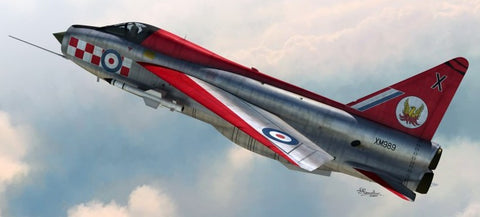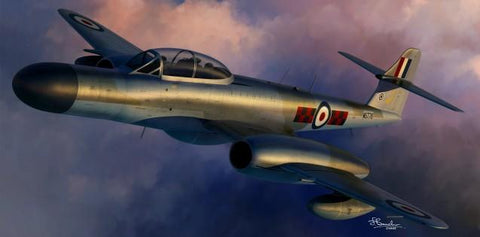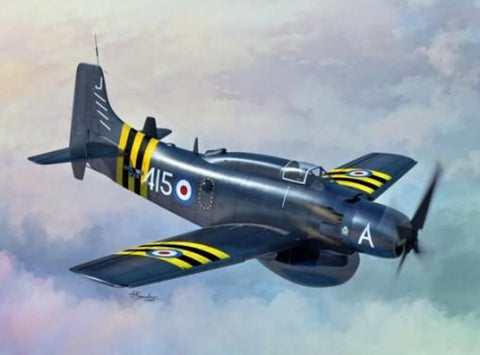
Sword Aircraft 1/72 F1/2 Lightning RAF Fighter Kit
This Product Usually Ships In 2-3 Business Days
SRT-72081The English Electric Lightning was a supersonic jet fighter aircraft of the Cold War era. It was designed and manufactured by English Electric, who was subsequently integrated into the unified British Aircraft Corporation, after which point the aircraft was marketed as the BAC Lightning. The Lightning was the only all-British Mach 2 fighter aircraft and was the first aircraft in the world capable of supercruise.
The Lightning was renowned for its capabilities as an interceptor; pilots commonly described it as "being saddled to a skyrocket". It was powered by the Rolls-Royce Avon turbojet engine; each aircraft had two Avon engines in an unusual stacked arrangement in the main fuselage with the cockpit perched on top. The Lightning was developed to counter increasingly-capable bomber aircraft, and thus had remarkable climb, altitude and speed flight performance in order to perform rapid interception. The type was subsequently developed for greater range and speed, as well as to perform reconnaissance and ground-attack missions.
The Lightning was used by the Royal Air Force, Royal Saudi Air Force and the Kuwait Air Force. It was operated as the RAF's primary interceptor for more than two decades, during which the type was never required to shoot down a hostile aircraft. Following retirement in the late 1980s, many of the remaining aircraft became museum exhibits; until 2010, three examples were kept flying at "Thunder City" in Cape Town, South Africa. In September 2008, the Institution of Mechanical Engineers conferred on the Lightning its "Engineering Heritage Award" at a ceremony at BAE Systems' site at Warton Aerodrom.
The first operational Lightning, designated the F.1, was designed as a point defence interceptor to defend mainland Britain from bomber attack. To best perform this intercept mission, emphasis was placed on rate-of-climb, acceleration, and speed, rather than range and combat endurance. It was equipped with two 30 mm ADEN cannon in front of the cockpit windscreen and an interchangeable fuselage weapons pack containing either an additional two ADEN cannon, 48 two-inch air-to-air rockets, or two de Havilland Firestreak air-to-air missiles; a heavy load-out optimized for damaging large aircraft, weapon guidance and ranging, as well as search and track functions, mainly were provided via the Ferranti AI.23 onboard radar.
The next two Lightning variants, the F.1A and F.2, were steady but relatively minor refinement of the design, while the next variant, the F.3, was a major departure. The F.3 had higher thrust Avon 301R engines, a larger squared-off fin and strengthened intake bullet allowing a service clearance to Mach 2.0 (the F.1, F.1A and F.2 were limited to Mach 1.7). The A.I.23B radar and Red Top missile offered a forward hemisphere attack capability and deletion of the nose cannon. The new engines and fin made the F.3 the highest performance Lightning yet, but with an even higher fuel consumption and resulting shorter range.






